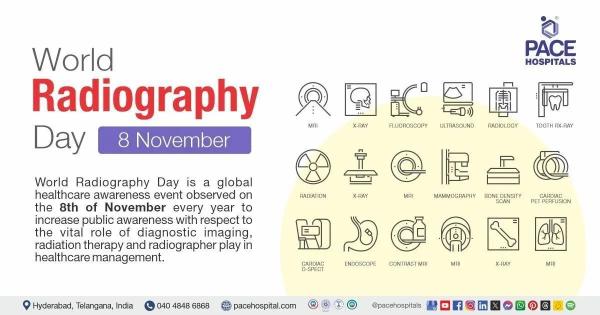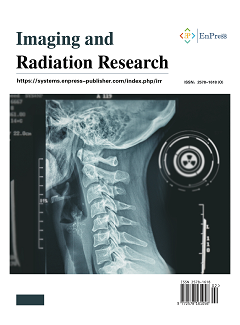Journal Abbreviation: Imaging. Radiat. Res. | Imaging and Radiation Research (IRR, ISSN: 2578-1618) is an international journal dedicated to advancing the field of medical imaging, radiation sciences, and their applications in health and disease. IRR is open to a broad range of subjects, spanning medical science, surgical practices, biomedical engineering, biology, materials science, environmental science, and related branches of physics and chemistry. It welcomes original research contributions, including laboratory-based studies, modeling, field tests, case reports, reviews, and significant applications of imaging technology and radiation-related analysis. The journal covers all aspects of imaging technology and analysis methods, Radiation Biology & Radiation Physics, including but not limited to:
|
Online Submissions
Registration and login are required to submit items online and to check the status of current submissions.
Already have a Username/Password for Imaging and Radiation Research?
GO TO LOGIN
Need a Username/Password?
GO TO REGISTRATION
Submission Preparation Checklist
As part of the submission process, authors are required to check off their submission's compliance with all of the following items, and submissions may be returned to authors that do not adhere to these guidelines.
- The submission has not been previously published, nor is it under another journal's consideration (or an explanation has been provided in Comments to the Editor).
- The submission file is in Microsoft Word format.
- Where available, URLs for the references have been provided.
- The text adheres to the stylistic and bibliographic requirements outlined in the Author Guidelines, which is found in About the Journal.
- If submitting to a peer-reviewed section of the journal, the instructions in Ensuring a Blind Review have been followed.
Privacy Statement
EnPress Publisher respects and strives to protect the privacy of its users and visitors. Hence, users and visitors are encouraged to read EnPress Publisher’s privacy policy regarding the usage and handling of user information.
(1) User information
Names and email addresses entered in all EnPress Publisher’s journal sites will be used exclusively for the stated purposes of the journals and will not be made available for any other purpose or to any other party. For submission and peer review, users should register an account for further procedures, including but not limited to name, email, address, interests, affiliation, and postcode, as editors need the information to complete in-house processes (e.g., processing a manuscript).
When users visit the publisher's website, information about the visit is saved in web logs (e.g., device, IP address, time of visit, etc.), which are only used to help improve the structure and content of the website.
(2) User rights
Users have the right to register or update their personal information and contact the publisher to cancel/delete their account if required.
(3) Third-party link
EnPress Publisher is not responsible for private information obtained by third-party websites when users log in via a pop-up screen from third-party software installed on their computer.
When users visit third-party platforms (e.g., LinkedIn, Twitter, COPE, etc.) through hyperlinks from EnPress Publisher’s journal websites, the privacy policy follows the policies of the third-party platforms.
(4) Queries or contact
For any queries about EnPress Publisher’s privacy policy, please contact the editorial office at editorial@enpress-publisher.com.
Article Processing Charges (APCs)
Imaging and Radiation Research is an Open Access Journal under EnPress Publisher. All articles published in Imaging and Radiation Research are accessible electronically from the journal website without commencing any kind of payment. In order to ensure contents are freely available and maintain publishing quality, Article Process Charges (APCs) are applicable to all authors who wish to submit their articles to the journal to cover the cost incurred in processing the manuscripts. Such cost will cover the peer-review, copyediting, typesetting, publishing, content depositing and archiving processes. Those charges are applicable only to authors who have their manuscript successfully accepted after peer-review.
| Journal Title | APCs |
|---|---|
| Imaging and Radiation Research | $300 |
We encourage authors to publish their papers with us and don’t wish the cost of article processing fees to be a barrier especially to authors from the low and lower middle income countries/regions. A range of discounts or waivers are offered to authors who are unable to pay our publication processing fees. Authors can write in to apply for a waiver and requests will be considered on a case-by-case basis.
APCs Payment
Payments for APC of this journal can be made through our online PayPal payment gateway. Enter the Article No. into the below textbox and select "Pay Now" to proceed with payment.
*Article No. is mandatory for payment and it can be found on the acceptance letter issued by the Editorial Office. Payment without indicating Article No. will result in processing problem and delay in article processing. Please note that payments will be processed in USD. You can make payment through Masters, Visa or UnionPay card.
Vol 8, No 1 (2025)
Table of Contents
Instant and accurate evaluation of drug resistance in tumors before and during chemotherapy is important for patients with advanced colon cancer and is beneficial for prolonging their progression-free survival time. Here, the possible biomarkers that reflect the drug resistance of colon cancer were investigated using proton magnetic resonance spectroscopy (1H-MRS) in vivo. SW480[5-fluorouracil(5-FU)-responsive] and SW480/5-FU (5-FU-resistant) xenograft models were generated and subjected to in vivo 1H-MRS examinations when the maximum tumor diameter reached 1–1.5 cm. The areas under the peaks for metabolites, including choline (Cho), lactate (Lac), glutamine/glutamate (Glx), and myo-inositol (Ins)/creatine (Cr) in the tumors, were analyzed between two groups. The resistance-related protein expression, cell morphology, necrosis, apoptosis, and cell survival of these tumor specimens were assessed. The content for tCho, Lac, Glx, and Ins/Cr in the tumors of the SW480 group was significantly lower than that of the SW480/5-FU group (P < 0.05). While there was no significant difference in the degree of necrosis and apoptosis rate of tumor cells between the two groups (P > 0.05), the tumor cells of the SW480/5-FU showed a higher cell density and larger nuclei. The expression levels of resistance-related proteins (P-gp, MPR1, PKC) in the SW480 group were lower than those in the SW480/5-FU group (P < 0.01). The survival rate of 5-FU-resistant colon cancer cells was significantly higher than that of 5-FU-responsive ones at 5-FU concentrations greater than 2.5 μg/mL (P < 0.05). These results suggest that alterations in tCho, Lac, Glx1, Glx2, and Ins/Cr detected by 1H-MRS may be used for monitoring tumor resistance to 5-FU in vivo.
Announcements
World Radiography Day 8 November 2024 - Importance, Theme & History |
|
 @ww.pacehospital.com |
|
| Posted: 2024-11-08 | More... |
Fourth Committee Considers Effects of Atomic Radiation, Reaffirms Commitment to UN Scientific Committee, Hears Reports on Information, Peacekeeping |
|
Reaffirming the important work of the United Nations Scientific Committee on the Effects of Atomic Radiation, the Fourth Committee (Special Political and Decolonization) today approved without a vote a resolution concerning that body, as speakers underscored the imperative of concerted and apolitical scientific work on this matter while also considering how to improve their working methods. |
|
| Posted: 2024-10-22 | More... |
Requirements for Documentation on Human and Animal Research |
|
| For articles submitted to the journal Imaging and Radiation Research that involve human or animal research, authors are required to provide the following documentation based on the specific circumstances: | |
| Posted: 2024-08-18 | More... |
| More Announcements... |




 Open Access
Open Access
